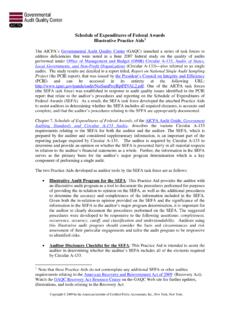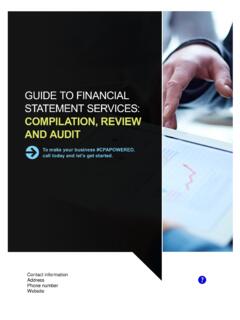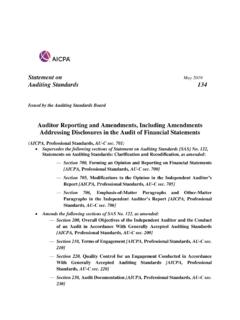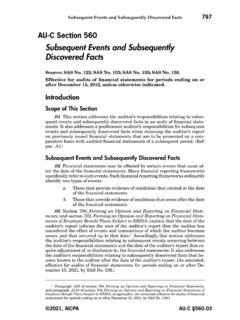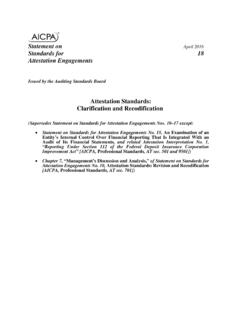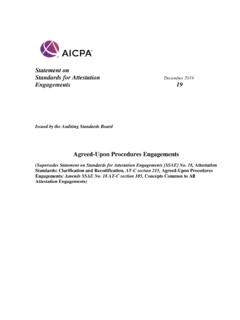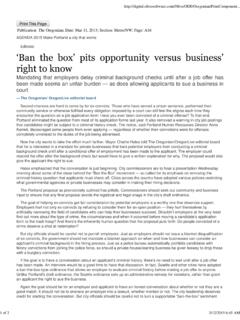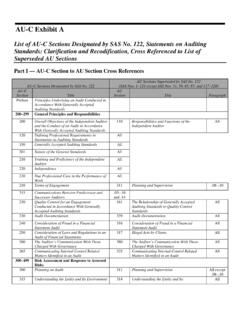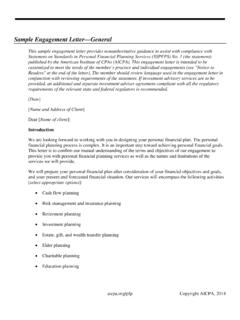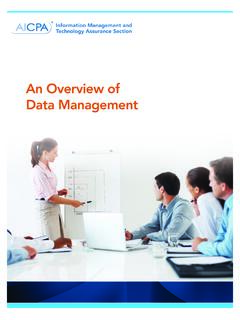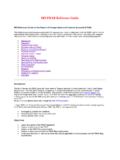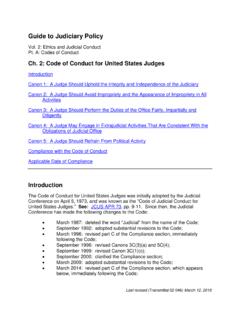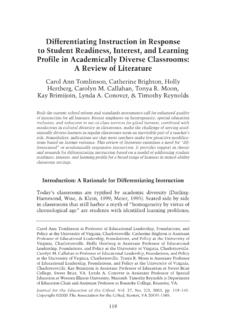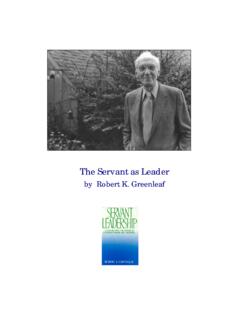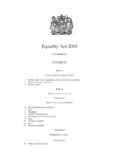Transcription of Evolution of Auditing: From the Traditional Approach to ...
1 November 2012. White Paper Evolution of Auditing: From the Traditional Approach to the Future Audit1. Authors AICPA Staff Paul Eric Byrnes, CMA Amy Pawlicki Rutgers University Rutgers Business School Director, Business Reporting, Assurance and Advisory Services Abdullah Al-Awadhi Dorothy McQuilken Rutgers University Rutgers Business School Manager, Business Reporting, Assurance and Advisory Services Benita Gullvist Hanken School of Economics Helen Brown-Liburd Rutgers University Rutgers Business School Ryan Teeter Rutgers University Rutgers Business School J. Donald Warren, Jr. University of Hartford Barney School of Business Miklos Vasarhelyi Rutgers University Rutgers Business School Abstract The purpose of this white paper is to discuss the Evolution of auditing and the history of the Traditional audit.
2 This white paper is the second essay in the update to the 1999 CICA and AICPA Research Report on Continuous Auditing. This paper is published by the AICPA Assurance Services Executive Committee's Emerging Assurance Technologies Task Force with the intent of offering insight into the Traditional audit Approach , how it has evolved, and how it might continue to evolve into the future audit. This paper is also intended to provide an improved understanding of movements that have taken and are taking place relative to technology such that readers might better envision how accountants will continue to be the assurance providers of choice in the evolving real-time global economy. The subject matter outlined in this paper is of interest to AICPA members and those in the accounting profession as a whole.
3 1. From the AICPA Assurance Services Executive Committee (ASEC) Emerging Assurance Technologies Task Force, 2012. 1. Introduction Auditing is currently at a critical juncture. Specifically, advances in information technology in conjunction with real-time approaches to conducting business are challenging the auditing profession. As such, the primary purpose of this essay is to examine the extent to which the auditing discipline in the United States has advanced and identify the trajectory it might take if it is to continue to thrive and provide long-run value to society at large. A Brief History of Auditing in the United States Although auditing procedures have been relied upon for many years, the formal practice of auditing has been in existence for a relatively short period.
4 In addition, emphasis has historically been placed on a periodic, backward-looking Approach whereby key events and activities are often identified long after their occurrence or simply undetected. Given that recent developments and technologies facilitated a movement away from the historical paradigm and toward a more proactive Approach , it is essential that auditors understand what the future audit entails and how they might begin to envision a logical progression to such a state. To enhance this comprehension, it is advisable to consider how auditing has evolved from its formal beginnings in the early twentieth century. The Industrial Revolution and the resulting explosion in growth of business activity led to widespread adoption of auditing methods. The railroads, in their efforts to report and control costs, production, and operating ratios, were major catalysts in the development of the accounting profession within the United States (Chandler 1977).
5 Specifically, firms became aware of the need for mechanisms of fraud detection and financial accountability, and investors increasingly relied upon financial reports as corporations began to participate in the stock market. Although these issues prompted an expansion in the use of accounting and auditing mechanisms, it was after the stock market crash of 1929 that auditing became an obligatory process in the United States. In particular, the Securities and Exchange Act of 1934 created the Securities and Exchange Commission (SEC). Among other responsibilities, the SEC was initially given authority for the promulgation of accounting standards as well as auditor oversight functions. In addition, the SEC was required to enforce the mandate that publicly traded companies submit various periodic reports to the agency in a timely fashion.
6 To assist the SEC with ensuring that these reports were created in accordance with generally accepted accounting principles (GAAP), public accounting firms were eventually required to provide certain assurances about the information. Many of the audit practices existing during the period that immediately followed were not conducted independently and, instead, simply relied upon information from management personnel. Furthermore, refinements of audit standards generally consisted of reactionary measures that occurred in response to significant negative business events. For example, audit tasks such as physical inspection of inventories and confirmation of receivables were optional until fraudulent activities were uncovered at McKesson & Robbins in 1939. As a result, the AICPA issued Statement on Auditing Procedure (SAP) No.
7 1 in October 1939 and it required that auditors inspect inventories and confirm receivables. Consequently, auditors became responsible for auditing the business entity itself rather than simply relying upon management verification routines. Following this, auditing by inspection and observation became the norm. Even as automated accounting systems began to appear in the 1950s, manual auditing procedures continued to be used exclusively. For example, in 1954, UNIVAC was unveiled as one of the first operational electronic accounting systems in the United States. However, auditors only began to seriously consider auditing in the computerized context in the early 1960s; two specific events prompted this transition. First, in 1961 Felix Kaufman wrote Electronic Data Processing and Auditing.
8 The book compares auditing around and through the computer. Historically, auditing around the computer entails Traditional manual procedures in which the existence of automated equipment is ignored. As such, the computer is treated as a black box. In this context, auditors rely upon physical inputs to and outputs from automated devices and do not concern themselves with how processing actually occurs within the system(s). Conversely, auditing through the computer involves actual use of computer systems in testing both controls and transactions. Finally, auditing with the computer entails direct evaluation of computer software, hardware, and processes. Consequently, auditing through the computer or with the computer is able to provide a much higher level of assurance when contrasted with auditing around the computer.
9 Second, International Business Machines (IBM) released its IBM 360 in 1963 and this device made computing more affordable than ever. Clearly, these developments collectively signaled a paradigm shift in terms of how accounting activities were to be conducted in the future and facilitated serious consideration of movement away from the Traditional manual audit. Notwithstanding the progression toward computerized accounting, many auditors continued to audit around the computer and the minority who elected to audit through the computer relied on an array of proprietary programs that were expensive, cumbersome, inefficient, and in need of constant reprogramming. For example, Cangemi and Singleton (2003) mention that in 2. 1967, one firm developed between 150 and 250 unique auditing programs.
10 Furthermore, nearly 80 percent of these programs required significant code modification in the subsequent year because of computer system enhancements and changes in audit requirements. The introduction of AUDITAPE by Haskins & Sells in 1967, a card oriented auditor-friendly computer assisted audit tool (CAAT), encouraged additional auditors to consider moving into the automated domain. In particular, AUDITAPE allowed nontechnical auditors the increased ability to audit through the computer and facilitated the creation of several general auditing software (GAS) programs from 1968 through the late 1970s. In conjunction with the development of these initial audit programs, Davis (1968) alerted auditors to the idea that they would simply not be able to ignore electronic data processing (EDP) in accounting systems when performing audits.
